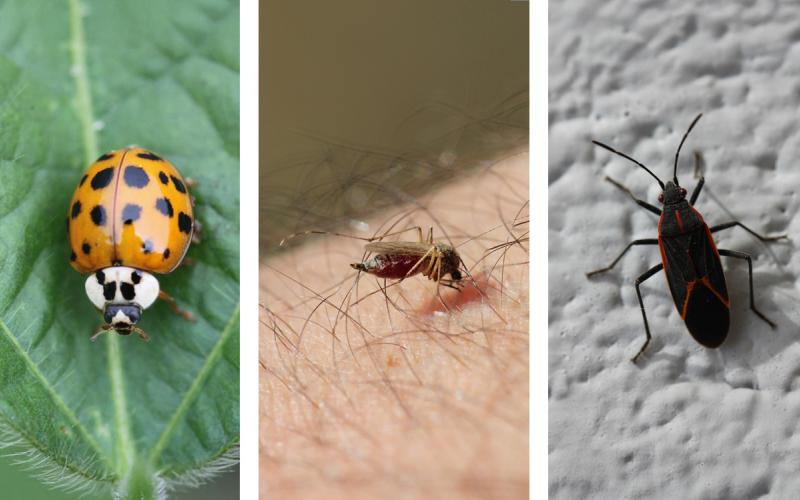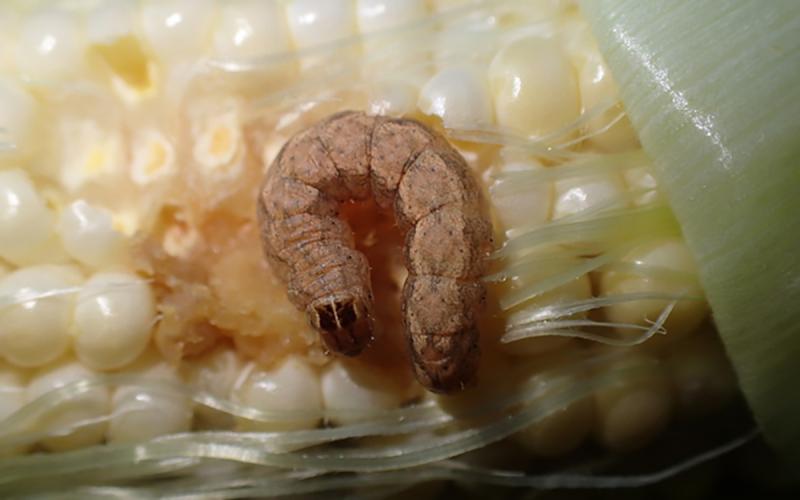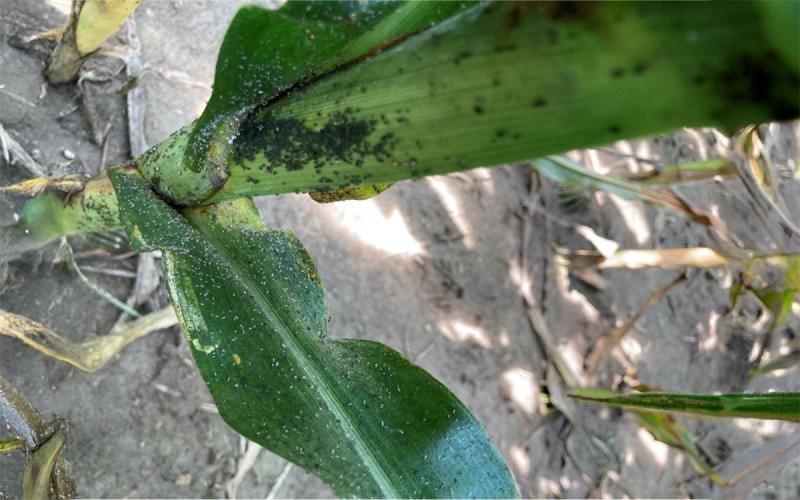
Written collaboratively by Adam Varenhorst, Philip Rozeboom, Patrick Wagner, and Brad McManus.
Aphid populations are taking off in some southeastern South Dakota corn fields (Figure 1). The two aphid species that are commonly observed in corn include the corn leaf aphid (Figure 2) and the bird cherry oat aphid (Figure 3). Infestations of both species are possible on the same corn plant. So far in 2025, the colonies present on corn are the bird cherry oat aphid (Figure 4).
Identification
Bird cherry oat aphids are dark green with a rusty orange patch present at the end of their abdomens. Bird cherry oat aphids will infest almost any area of the corn plant. During early infestations, they will often be present on the stalk near the ears. Once the population increases, aphids can be found on the stalks, leaves, and ears. In some cases, the aphids can be present under layers of the husks.
Corn Leaf Aphids
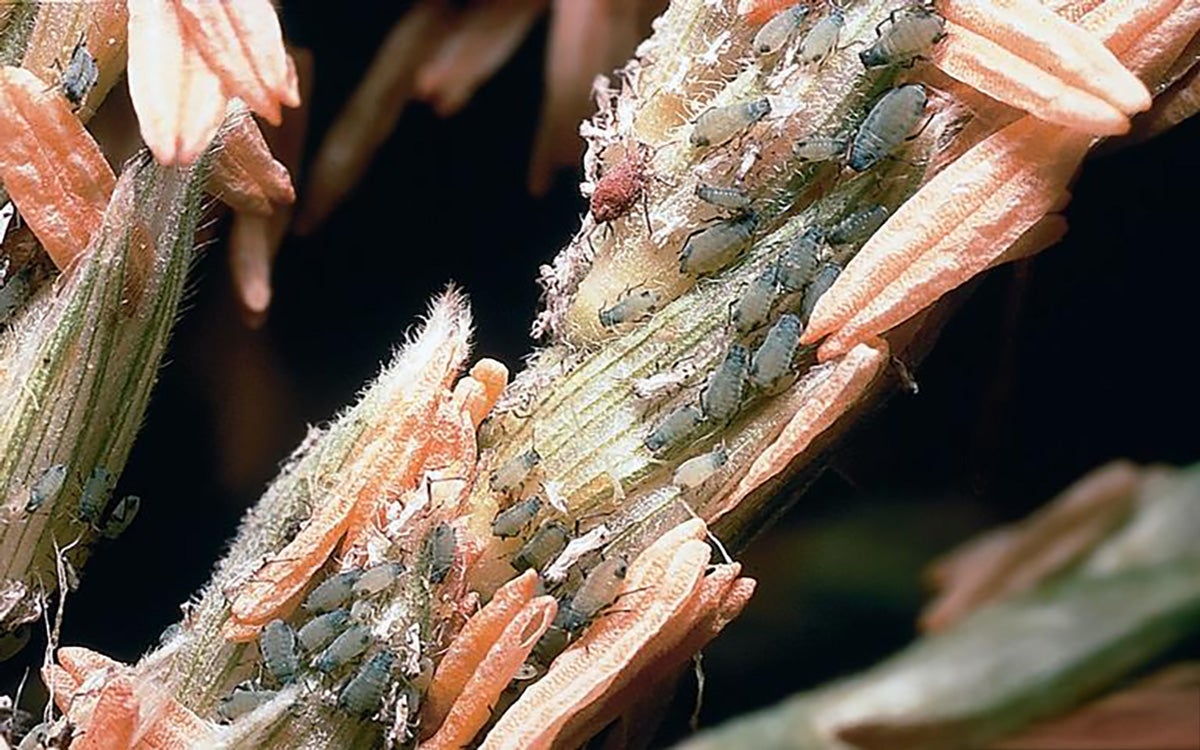
Bird Cherry Oat Aphid

Management Considerations
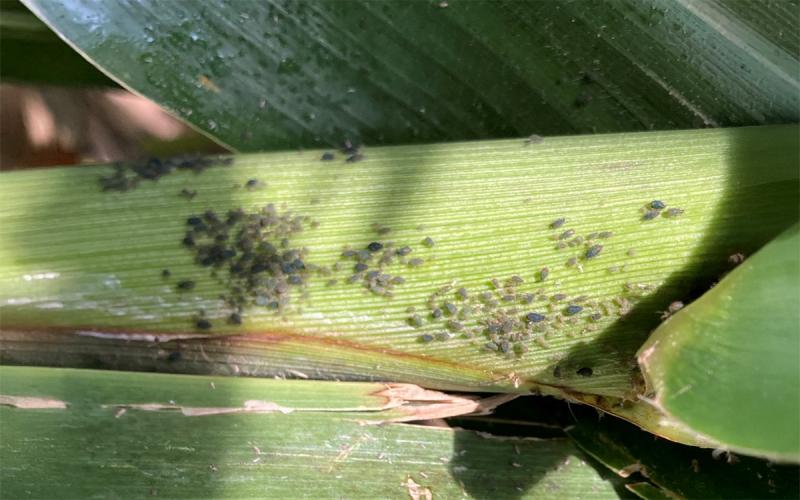
There are currently no treatment thresholds for aphid populations in corn. Although aphid populations can reach high densities in corn, their presence doesn’t indicate guaranteed yield loss. Typically, these populations show up in South Dakota following harvest of small grains and don’t reach large populations or feed enough to cause concern. Dr. Erin Hodgson, Professor at Iowa State University, recommends sampling 30 corn plants for every 50 acres of a field to determine the average aphid density present. In addition, below are some factors Dr. Hodson suggests considering prior to insecticidal management of aphids in corn.
- Determine if aphid infestations are primarily occurring around the field edge.
- Determine if infestations are present on 80% or more of the scouted plants.
- After scouting for more than one week, determine if the aphid populations are increasing.
- From scouting records, determine how long the aphid populations have been present within the field.
- Determine if there is honeydew and sooty mold present on the stalk, leaves, or ears of the plants (sooty mold will decrease photosynthesis and mold growth on ears can also decrease grain quality).
- Determine if winged and wingless aphids are present on the plants.
- Determine if the corn is drought stressed (drought stress increases the impact of aphid feeding).
- Determine the growth stage of the corn field (fields that have reached hard dent will not be impacted by aphid management).
- Estimate the harvest date for the field to ensure that pre-harvest intervals on insecticides will not delay harvest.
- Don’t expect residuals to protect the corn from aphids.
- Determine if natural enemies of the aphids are present (lady beetle larvae and adults, aphid mummies, or other predators).
- Determine if humidity levels are high in the canopy or if rain is anticipated (naturally occurring fungi can decimate aphid populations when large populations are present and humidity levels are optimal for the fungi.
There are no reports of insecticide resistance for bird cherry oat aphids in South Dakota. For a list of products that are labeled in corn for aphid management please refer to the current South Dakota Pest Management Guide: Corn.

